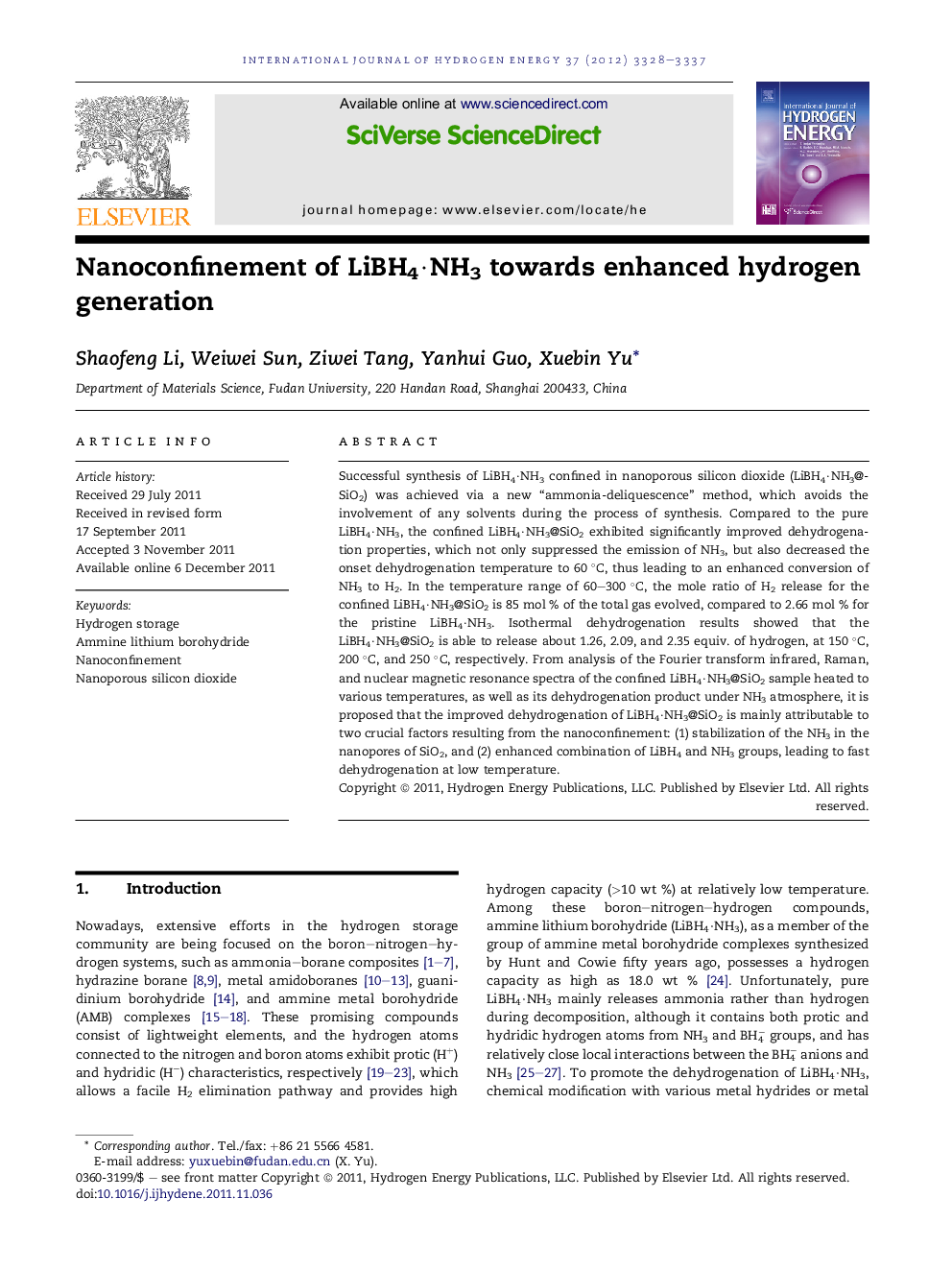| Article ID | Journal | Published Year | Pages | File Type |
|---|---|---|---|---|
| 1282340 | International Journal of Hydrogen Energy | 2012 | 10 Pages |
Successful synthesis of LiBH4·NH3 confined in nanoporous silicon dioxide (LiBH4·NH3@SiO2) was achieved via a new “ammonia-deliquescence” method, which avoids the involvement of any solvents during the process of synthesis. Compared to the pure LiBH4·NH3, the confined LiBH4·NH3@SiO2 exhibited significantly improved dehydrogenation properties, which not only suppressed the emission of NH3, but also decreased the onset dehydrogenation temperature to 60 °C, thus leading to an enhanced conversion of NH3 to H2. In the temperature range of 60–300 °C, the mole ratio of H2 release for the confined LiBH4·NH3@SiO2 is 85 mol % of the total gas evolved, compared to 2.66 mol % for the pristine LiBH4·NH3. Isothermal dehydrogenation results showed that the LiBH4·NH3@SiO2 is able to release about 1.26, 2.09, and 2.35 equiv. of hydrogen, at 150 °C, 200 °C, and 250 °C, respectively. From analysis of the Fourier transform infrared, Raman, and nuclear magnetic resonance spectra of the confined LiBH4·NH3@SiO2 sample heated to various temperatures, as well as its dehydrogenation product under NH3 atmosphere, it is proposed that the improved dehydrogenation of LiBH4·NH3@SiO2 is mainly attributable to two crucial factors resulting from the nanoconfinement: (1) stabilization of the NH3 in the nanopores of SiO2, and (2) enhanced combination of LiBH4 and NH3 groups, leading to fast dehydrogenation at low temperature.
► Successful synthesis of LiBH4·NH3 confined in nanoporous silicon dioxide. ► Confined LiBH4·NH3 exhibited significantly improved dehydrogenation properties in contrast to the bulk one. ► Nanoconfinement stabilized the NH3 in the nanopores and enhanced combination of LiBH4 and NH3 groups.
